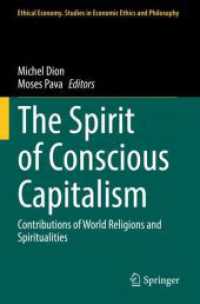- ホーム
- > 洋書
- > ドイツ書
- > Humanities, Arts & Music
- > Music
- > musical equipment
Description
(Text)
Wer liest, hört mehr. Wer eine Komposition wirklich begreifen will, greift zur Studienpartitur. Die Feinheiten einer Komposition erschließen sich erst über den Notentext. Die Reihe Eulenburg Audio+Score zeichnet sich durch lesefreundliches Format und ausgezeichnetes Druckbild, hochwertiges Papier und ein zweisprachiges Vorwort in Deutsch und Englisch aus.Wir liefern Ihnen nicht nur eine Partitur, sondern gleichzeitig die Musik dazu. Alle Bände enthalten eine CD von Naxos mit hervorragenden Einspielungen der Werke.
(Table of content)
Preface/Vorwort - Editorial Notes/Revisionsbericht - Preface to the second edition/Vorwort zur Neuauflage - I. Allegro affetuoso - II. Intermezzo. Andantino grazioso - III. Allegro vivace
(Text)
The more you read, the more you hear!The Eulenburg Audio+Score Series contains the orchestral world's treasures from the baroque, classical and romantic repertoire. Each of the 50 volumes consists of a clearly-presented and authoritative score, an informative preface detailing the biographical and creative background, and a Naxos CD containing the work in full length.Eulenburg Audio+Score is the new way to hear, read and understand music.Instrumentation:piano and orchestraop. 54
(Table of content)
Preface/Vorwort - Editorial Notes/Revisionsbericht - Preface to the second edition/Vorwort zur Neuauflage - I. Allegro affetuoso - II. Intermezzo. Andantino grazioso - III. Allegro vivace
(Author portrait)
Robert Schumann nahm in Leipzig Klavierunterricht bei Friedrich Wieck, dem Vater seiner späteren Frau Clara. Er begann zunächst ein Jurastudium, ab 1830 widmete er sich ausschließlich der Musik. Als Komponist und Musikschriftsteller (er begründete die "Neue Zeitschrift für Musik") ist Schumann der vielleicht typischste Vertreter der deutschen Romantik. Er schrieb 4 Sinfonien, Liederzyklen, große Vokalformen, Kammermusik und Klaviermusik, letztere z.T. auch für seine Kinder ("Album für die Jugend", 1848).








